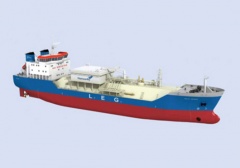Difference between revisions of "Ethylene"
(→Shipment / Storage) |
|||
| Line 15: | Line 15: | ||
Polyethylene, polypropylene, ethylene oxide, ethylene dichloride, ethylene glycols, [[aluminium]] alkyls, vinyl chloride, vinyl acetate, ethyl chloride, ethylene chlorohydrin, acetaldehyde, ethyl alcohol, polystyrene, styrene, polyvinyl chloride, SBR, polyester resins, trichloroethylene, etc.; refrigerant, welding and cutting of metals, anesthetic, in orchard sprays to accelerate [[fruit]] ripening.<br><br> | Polyethylene, polypropylene, ethylene oxide, ethylene dichloride, ethylene glycols, [[aluminium]] alkyls, vinyl chloride, vinyl acetate, ethyl chloride, ethylene chlorohydrin, acetaldehyde, ethyl alcohol, polystyrene, styrene, polyvinyl chloride, SBR, polyester resins, trichloroethylene, etc.; refrigerant, welding and cutting of metals, anesthetic, in orchard sprays to accelerate [[fruit]] ripening.<br><br> | ||
==Shipment / Storage== | ==Shipment / Storage== | ||
| − | Physical state: gas<br> | + | Physical state: gas<br> |
| − | Colour: colorless<br> | + | Colour: colorless<br> |
Physical form: compressed gas<br> | Physical form: compressed gas<br> | ||
Odour: sweet odor<br> | Odour: sweet odor<br> | ||
Revision as of 10:38, 16 April 2013
| Infobox on Ethylene | |
|---|---|
| Example of Ethylene |  |
| Facts | |
| Origin | - |
| Stowage factor (in m3/t) | - |
| Humidity / moisture | - |
| Ventilation | - |
| Risk factors | See text |
Ethylene
Description
Ethylene is a colourless gas with a sweet odour and taste.
Ethylene is produced in the petrochemical industry by steam cracking. In this process, gaseous or light liquid hydrocarbons are heated to 750–950°C, inducing numerous free radical reactions followed by immediate quench to stop these reactions. This process converts large hydrocarbons into smaller ones and introduces unsaturation. Ethylene is separated from the resulting complex mixture by repeated compression and distillation. In a related process used in oil refineries, high molecular weight hydrocarbons are cracked over zeolite catalysts. Heavier feedstocks, such as naphtha and gas oils require at least two "quench towers" downstream of the cracking furnaces to recirculate pyrolysis-derived gasoline and process water. When cracking a mixture of ethane and propane, only one water quench tower is required.
Ethylene is the simplest member of the olefin family, the largest volume organic chemical and is used in more than 30% of all petrochemical products. Because of its unsaturated nature, ethylene is very reactive and it has become one of the main building blocks of the petrochemical industry. The principal source of ethylene in Europe is the steam cracking of naphtha, while the United States traditionally has obtained its ethylene supplies from natural gas liquids.
The main attractions of ethylene to the chemical industry have been the ready availability of this feedstock, a reasonable cost and high purity. More than two-thirds of its utilization is for the production of polymers, a fast expanding sector.
Application
Polyethylene, polypropylene, ethylene oxide, ethylene dichloride, ethylene glycols, aluminium alkyls, vinyl chloride, vinyl acetate, ethyl chloride, ethylene chlorohydrin, acetaldehyde, ethyl alcohol, polystyrene, styrene, polyvinyl chloride, SBR, polyester resins, trichloroethylene, etc.; refrigerant, welding and cutting of metals, anesthetic, in orchard sprays to accelerate fruit ripening.
Shipment / Storage
Physical state: gas
Colour: colorless
Physical form: compressed gas
Odour: sweet odor
Taste: sweet taste
Molecular weight: 28.05
Molecular formula: C-H2-C-H2
Boiling point: -155°F (-104°C)
Freezing point: -169°C
Lower flammable limit: 2.7%
Upper flammable limit: 36%
Autoignition: 450°C











